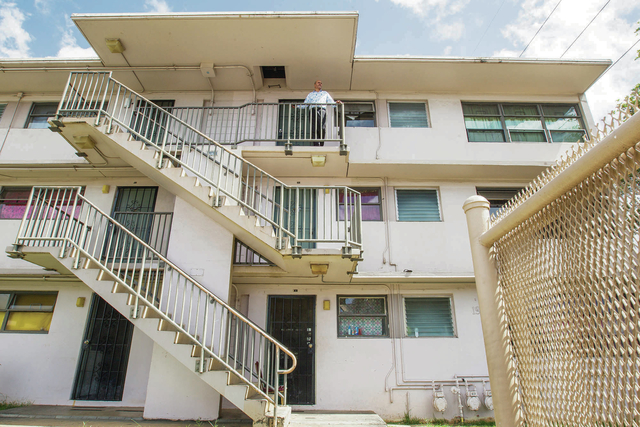Honolulu kamaaina might hesitate at calling it a “diamond in the rough.” Mayor Wright Homes, after all, has a history of being very rough, and not very gem-like.
In recent years, though, the Hawaii Public Housing Authority (HPHA) has made strides toward addressing the most serious problems in living conditions — most notably, restoring functional water heating, and security.
But beyond those baseline improvements, it’s time to capitalize on the site’s potential to offer much more to the roughly 364 low-income households living in the Kalihi-
Palama complex, and to the city as a whole.
The state has long contemplated the redevelopment of the 20-acre site, pegged for a 2020 completion. And the time is now right to make that a reality. It is located near the planned rail alignment: Transit-oriented development rules provide added incentives to make the project pencil out.
The two- and three-story buildings would be leveled, to be replaced with high-rise towers that could boost the capacity to accommodate Hawaii’s poorer tenants. There would also be market-priced rentals in the mix to generate cash flow for the project.
The fact that this now seems like a worthy plan shows how much circumstances have changed.
Mayor Wright — named in honor of Mayor George Wright, who served in the Honolulu Hale of the 1930s — was built in 1953. It was low-rise, but Hawaii soon adopted a national trend toward public housing in high-rise blocks, Kuhio Park Terrace the best known among these.
That trend became discredited because of the social ills centered in these poorly maintained and densely populated concentrations of low-income families. In the late 1960s, urban planners moved away from that model.
However, the plans for high-rise development along the spine of the rail project would make the redevelopment envisioned by HPHA a good fit at Mayor Wright. The blueprint is for tenants at various income levels, and, wisely, for a mix of residential and commercial uses as well.
Hakim Ouansafi, the agency’s action-oriented executive director, describes a $300 million investment in the project, which would yield community parks and pedestrian links to the rail line as well as the needed apartment units.
That’s the broad vision. Details of cost, design and financing are still to be worked out.
This, said area Councilman Joey Manahan, has some residents worried because they will be moved out temporarily during construction. And in fact, the state must work carefully with community groups to air their concerns and calm their fears.
Prospects for that look good. Ouansafi has demonstrated a willingness to give tenants their chance to weigh in; that kind of open communication will be essential to a smooth transition here.
A mixed-use, mixed-income complex would certainly be more livable than the existing nest of aging apartments. The reality remains a long way off, but the promise — a healthier, stronger community — is compelling.

